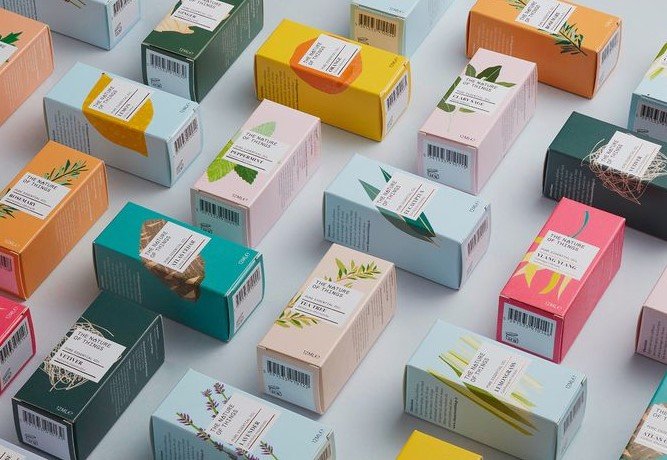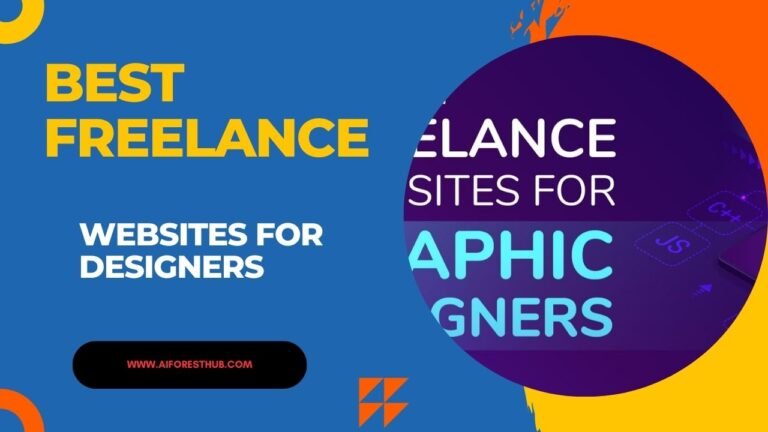Product Packaging Design Company
A product packaging design company specializes in creating visually appealing and functional packaging solutions. They enhance brand identity while ensuring product protection.
Effective packaging design plays a crucial role in attracting consumers and differentiating products in a competitive market. A well-designed package not only catches the eye but also communicates the brand’s message and values. Companies often collaborate with skilled designers to develop custom packaging that reflects their unique identity and meets industry standards.
This process involves selecting materials, colors, and shapes that resonate with target audiences. Investing in quality packaging design can significantly impact sales and customer loyalty. Brands need to prioritize packaging as part of their overall marketing strategy to drive success.
Product Packaging Design Company

Table of Contents
Importance Of Packaging
Product packaging is more than just a container. It is a crucial part of a product’s success. Good packaging can grab attention and tell a story. It helps customers connect with a brand. A well-designed package makes a product stand out on the shelf. In today’s market, effective packaging is essential.
Brand Identity
Packaging plays a key role in defining a brand’s identity. It reflects the brand’s values and personality. A strong brand identity helps customers remember a product. Here are some important aspects:
- Color Scheme: Colors evoke emotions and set the mood.
- Logo Placement: A clear logo builds brand recognition.
- Typography: Fonts convey feelings, from playful to serious.
Let’s look at how packaging can enhance brand identity:
| Element | Impact on Brand |
|---|---|
| Color | Creates emotional connections. |
| Shapes | Can convey uniqueness. |
| Materials | Show commitment to sustainability. |
Strong packaging helps customers feel connected. It makes them trust and prefer a brand over others. This connection can lead to long-term loyalty.
Consumer Attraction
Attracting consumers is vital for sales. Packaging is the first thing customers see. Eye-catching designs can spark interest quickly. Here are some strategies for effective consumer attraction:
- Unique Shapes: Oddly shaped packages stand out.
- Bright Colors: Bold colors grab attention.
- Clear Messaging: Easy-to-read information helps customers.
Consider these tips for designing attractive packaging:
- Focus on the target audience.
- Use high-quality materials.
- Incorporate interactive elements.
Effective packaging does more than look good. It tells a story about the product. This story can draw customers in. Good packaging leads to increased sales and brand loyalty.

Types Of Packaging
Product packaging plays a crucial role in attracting customers and protecting items. A good packaging design can make a product stand out on the shelf. Different types of packaging serve various needs. Understanding these types helps businesses choose the best option for their products. Here, we explore the two main types of packaging: flexible and rigid.
Flexible Packaging
Flexible packaging is versatile and can adapt to different shapes and sizes. It often uses materials like plastic, foil, or paper. This type of packaging is lightweight and easy to transport. It provides a tight seal, keeping products fresh. Here are some key features:
- Lightweight: Reduces shipping costs.
- Space-efficient: Takes up less room during storage.
- Customizable: Can be printed with vibrant designs.
- Eco-friendly options: Many materials are recyclable.
Flexible packaging includes:
- Bags
- Pouches
- Wraps
- Films
Here’s a quick comparison of flexible packaging materials:
| Material | Benefits |
|---|---|
| Plastic | Water-resistant and durable |
| Foil | Excellent barrier against light and moisture |
| Paper | Biodegradable and recyclable |
Rigid Packaging
Rigid packaging offers solid protection for products. This type includes materials like glass, metal, and hard plastics. It provides excellent support and keeps items safe during transport. Rigid packaging is often used for fragile items. Here are its main benefits:
- Durability: Protects contents from damage.
- Reusable: Many rigid packages can be repurposed.
- Premium feel: Attracts customers with a high-quality look.
- Safety: Reduces the risk of spills and leaks.
Common types of rigid packaging include:
- Boxes
- Bottles
- Cans
- Jars
Here’s a quick look at rigid packaging materials:
| Material | Benefits |
|---|---|
| Glass | Non-reactive and recyclable |
| Metal | Strong and long-lasting |
| Plastic | Lightweight and moldable |
Materials Used
A Product Packaging Design Company focuses on creating attractive and functional packaging. Choosing the right materials is crucial. The materials used can impact the product’s safety, appearance, and environmental footprint. This section explores sustainable options and cost-effective choices for packaging materials.
Sustainable Options
Many companies today prioritize sustainability in their packaging design. Using eco-friendly materials helps reduce waste and pollution. Here are some popular sustainable options:
- Recycled Paper: Made from post-consumer waste, it reduces deforestation.
- Bamboo: Fast-growing and renewable, bamboo is biodegradable.
- Bioplastics: Made from natural materials, these plastics break down easily.
- Glass: Reusable and recyclable, glass is a safe choice for many products.
These materials not only protect the product but also promote a green image. A recent study shows that 70% of consumers prefer eco-friendly packaging. This can lead to increased sales.
| Material | Benefits | Recyclability |
|---|---|---|
| Recycled Paper | Reduces waste, lightweight | 100% recyclable |
| Bamboo | Renewable, biodegradable | Compostable |
| Bioplastics | Less fossil fuel use | Varies by type |
| Glass | Durable, reusable | 100% recyclable |
Cost-effective Choices
Cost plays a big role in packaging design. Companies want to save money without sacrificing quality. Here are some cost-effective choices for packaging materials:
- Cardboard: Strong and cheap, cardboard is a popular choice.
- Plastic: Lightweight and low-cost, plastic can be molded into different shapes.
- Foam: Provides great protection at a low price.
- Simple Designs: Reducing complexity can lower production costs.
Using these materials can help businesses save money while still appealing to customers. Consider the following points:
- Bulk purchasing reduces costs.
- Simple packaging designs cut production time.
- Choosing local suppliers saves on shipping costs.
By balancing cost and quality, companies can create effective packaging. This leads to happy customers and better profits.

Design Process
Product packaging design is crucial for brands. It shapes how customers see your product. A great design attracts buyers and sets your product apart. The design process involves careful steps to create effective packaging. These steps ensure the final product is not just attractive but also functional.
Research And Concept
The first step in the design process is research. This helps designers understand the market. They study trends, competitors, and customer preferences. Good research leads to strong concepts. A well-thought-out concept guides the entire design.
- Market Analysis: Understand what is trending in the packaging world.
- Target Audience: Know your customers and what they like.
- Competitor Review: Analyze what competitors are doing.
After gathering information, designers brainstorm ideas. They sketch different concepts. These sketches represent the vision for the packaging. Here is a simple table outlining key aspects:
| Aspect | Description |
|---|---|
| Color Scheme | Choose colors that resonate with the brand. |
| Material | Select eco-friendly or durable materials. |
| Shape | Design a unique shape that stands out. |
Once the concepts are ready, the team presents them to stakeholders. Feedback is gathered to refine the ideas. This collaboration enhances the final design.
Prototyping
Prototyping is the next crucial step. This phase transforms ideas into tangible samples. Designers create prototypes to test the concepts. Prototypes allow teams to see, touch, and evaluate the design.
- Materials Used: Choose materials that reflect the final product.
- Size and Shape: Ensure the prototype matches the intended design.
- Functionality: Test if the packaging serves its purpose.
Prototypes undergo various tests. Here are some key tests:
- Durability: Check if it can withstand shipping.
- Usability: Ensure it is easy to open and use.
- Aesthetics: Evaluate visual appeal.
Feedback from these tests is vital. It helps in making necessary adjustments. Final prototypes are then presented for approval. This ensures the design meets all expectations before mass production.
Trends In Packaging
Product packaging design plays a vital role in attracting customers. It reflects a brand’s identity and values. Trends in packaging change often. Staying updated helps businesses connect better with their audience. Innovative designs can boost sales and enhance the user experience. Let’s explore two exciting trends in packaging: minimalism and interactive designs.
Minimalism
Minimalism focuses on simplicity. It uses fewer elements to create a strong impact. This trend is gaining popularity due to its clean and elegant look. Here are some key features of minimalist packaging:
- Clean lines and shapes
- Limited color palettes
- Simple typography
- Functional designs
Minimalist packaging makes products stand out. It allows customers to focus on the product itself. Many brands are adopting this trend to convey sophistication.
Here is a quick comparison of minimalist and traditional packaging:
| Aspect | Minimalist Packaging | Traditional Packaging |
|---|---|---|
| Design Complexity | Simple and clean | Detailed and complex |
| Color Usage | Limited colors | Vibrant and varied |
| Customer Focus | Product-centric | Brand-centric |
Brands that embrace minimalism can create a lasting impression. This trend appeals to modern consumers who appreciate simplicity and elegance.
Interactive Designs
Interactive designs engage customers in unique ways. They create an experience beyond just the product. This trend encourages customers to interact with packaging. Here are some features of interactive packaging:
- QR codes for instant information
- Augmented reality experiences
- Unique opening mechanisms
- Personalized messages
Interactive designs can boost customer engagement. They make unboxing fun and memorable. Brands can tell a story or provide useful information.
Here are some benefits of using interactive packaging:
- Increases brand loyalty
- Enhances user experience
- Encourages social sharing
Brands like Coca-Cola and Heineken use interactive designs effectively. These designs attract attention and create a buzz. Customers feel more connected to the brand.
Incorporating interactive elements can lead to higher sales and brand recognition. This trend shows how packaging can do more than just hold a product.
Technology In Packaging
Technology plays a huge role in the world of packaging design. A Product Packaging Design Company uses modern tools to create exciting and functional packages. These packages not only protect items but also attract customers. With the right technology, packaging can be both beautiful and smart.
3d Modeling
3D modeling is a game-changer in packaging design. It helps designers create realistic images of packages before they are made. This allows for quick adjustments and better ideas. Here are some benefits of 3D modeling:
- Visual Accuracy: Designers see how the package will look in real life.
- Faster Prototyping: Changes can be made quickly.
- Cost-Effective: Reduces the need for physical samples.
Using 3D modeling, designers can showcase various features of the package. This includes:
| Feature | Description |
|---|---|
| Shape | Different shapes can be tested. |
| Colors | Various color options can be explored. |
| Materials | See how different materials work together. |
3D modeling helps brands make informed choices. It leads to better designs and happier customers.
Smart Packaging
Smart packaging is the future of product design. It uses technology to enhance user experience. This type of packaging can communicate with consumers. Here are some features of smart packaging:
- QR Codes: Scanning codes gives more product info.
- Temperature Sensors: Alerts if a product is spoiled.
- Interactive Elements: Engages customers with fun experiences.
Smart packaging is not just cool; it is also useful. It helps brands stand out. Here is how smart packaging benefits businesses:
| Benefit | Description |
|---|---|
| Brand Loyalty | Engaging features keep customers coming back. |
| Reduced Waste | Better tracking means less wasted products. |
| Market Insights | Data from smart packaging helps brands improve. |
Smart packaging leads to more informed buyers. It creates a unique experience and builds trust.
Challenges Faced
Product packaging design companies face many challenges. These challenges can affect their success. Understanding these challenges helps companies create better products. This section explores two major issues: regulatory compliance and market competition.
Regulatory Compliance
Regulatory compliance is crucial for product packaging design. Companies must follow strict rules. These rules vary by country and industry. Ignoring them can lead to fines or product recalls. Here are some common compliance issues:
- Labeling Requirements: Products must have clear and accurate labels.
- Material Safety: Packaging materials must be safe for consumers.
- Environmental Regulations: Some countries require eco-friendly packaging.
Companies must stay updated with these regulations. This can be challenging due to constant changes. Here’s a quick look at the types of regulations:
| Type of Regulation | Description |
|---|---|
| Food and Beverage | Must follow strict health and safety guidelines. |
| Cosmetics | Labeling must include all ingredients and warnings. |
| Consumer Goods | Must meet safety standards to avoid hazards. |
Companies often hire legal experts to ensure compliance. This adds to costs but protects the brand.
Market Competition
Market competition is intense in packaging design. Many companies strive for attention. Standing out is crucial for success. Here are some strategies to cope:
- Innovative Designs: Unique packaging attracts customers.
- Cost Efficiency: Reducing costs while maintaining quality is vital.
- Brand Identity: Strong branding helps products become recognizable.
Understanding competitors is essential. Companies should analyze their strengths and weaknesses. Here’s a simple way to do this:
- Identify top competitors.
- Evaluate their packaging designs.
- Note what works and what doesn’t.
Staying ahead requires creativity and constant research. Companies must adapt to trends quickly. This competitive landscape can be tough, but it drives innovation.
Choosing A Company
Choosing the right product packaging design company is essential for your brand’s success. Great packaging grabs attention and builds trust. It reflects your brand’s personality and values. A smart choice can increase sales and customer loyalty. Follow these tips to find the best company for your needs.
Portfolio Evaluation
Evaluating a company’s portfolio is crucial. It shows their skills and creativity. Look for these key points:
- Variety: Check if they have worked on different types of products.
- Style: Notice the design styles they use. Do they match your vision?
- Innovation: Look for unique designs that stand out.
- Results: Assess if their designs led to successful sales.
To make your evaluation easier, consider using a simple table:
| Aspect | Evaluation Criteria |
|---|---|
| Variety | Range of products designed |
| Style | Alignment with your brand’s aesthetic |
| Innovation | Unique and creative designs |
| Results | Evidence of increased sales |
Evaluate at least three companies. This will help you find the best match. A strong portfolio indicates a reliable partner for your packaging needs.
Client Testimonials
Client testimonials provide valuable insights. They reflect customer satisfaction and company reliability. Look for feedback on:
- Quality: Do clients praise the design quality?
- Communication: Are they responsive and easy to work with?
- Timeliness: Do they deliver on time?
- Support: Do they offer assistance after the project?
Here’s a sample of what good testimonials might look like:
| Client Name | Testimonial |
|---|---|
| Jane Doe | “The packaging design boosted our sales by 30%! Highly recommend!” |
| John Smith | “Amazing team! They understood our vision perfectly.” |
| Emily Johnson | “They delivered on time and exceeded our expectations.” |
Read multiple testimonials. This helps ensure the company meets your expectations. Satisfied clients often lead to strong partnerships.
Conclusion
Effective product packaging design can significantly elevate your brand’s presence. A professional design company helps create unique, eye-catching solutions that resonate with your target audience. Investing in quality packaging not only enhances your product but also builds customer loyalty. Choose the right partner to transform your vision into reality and stand out in the market.






